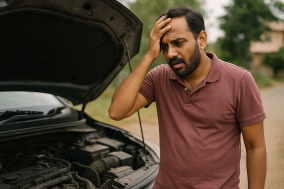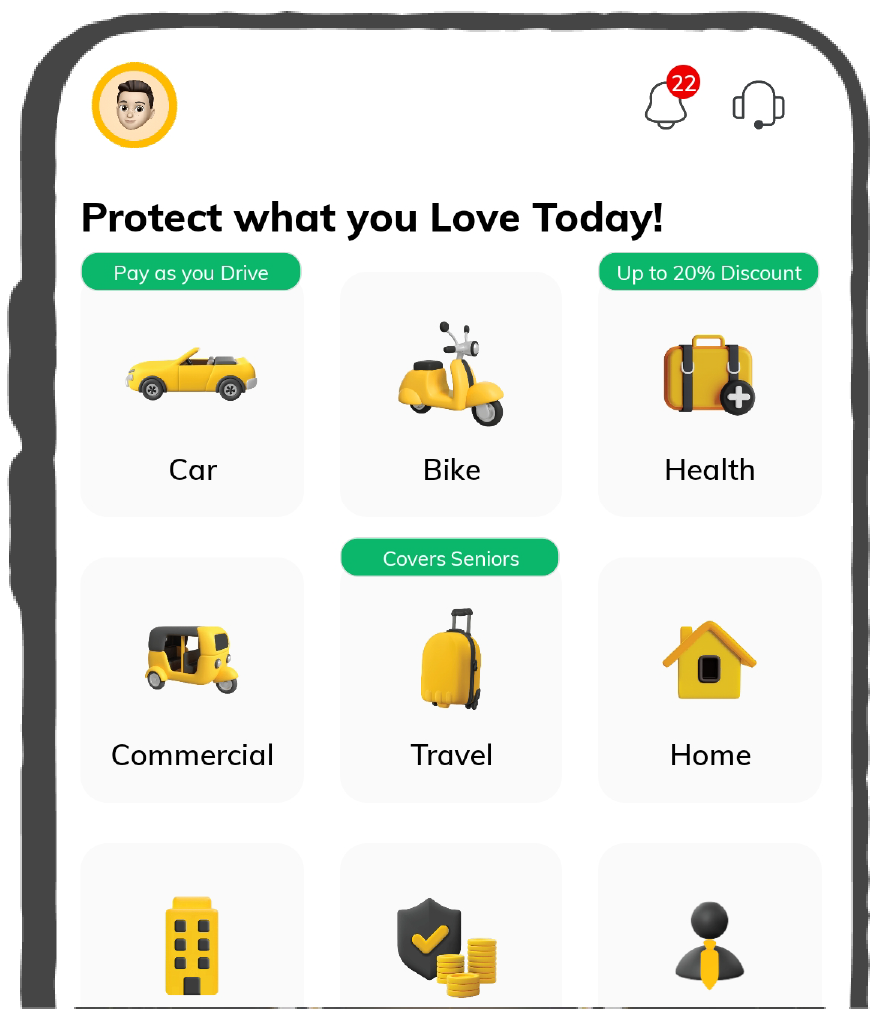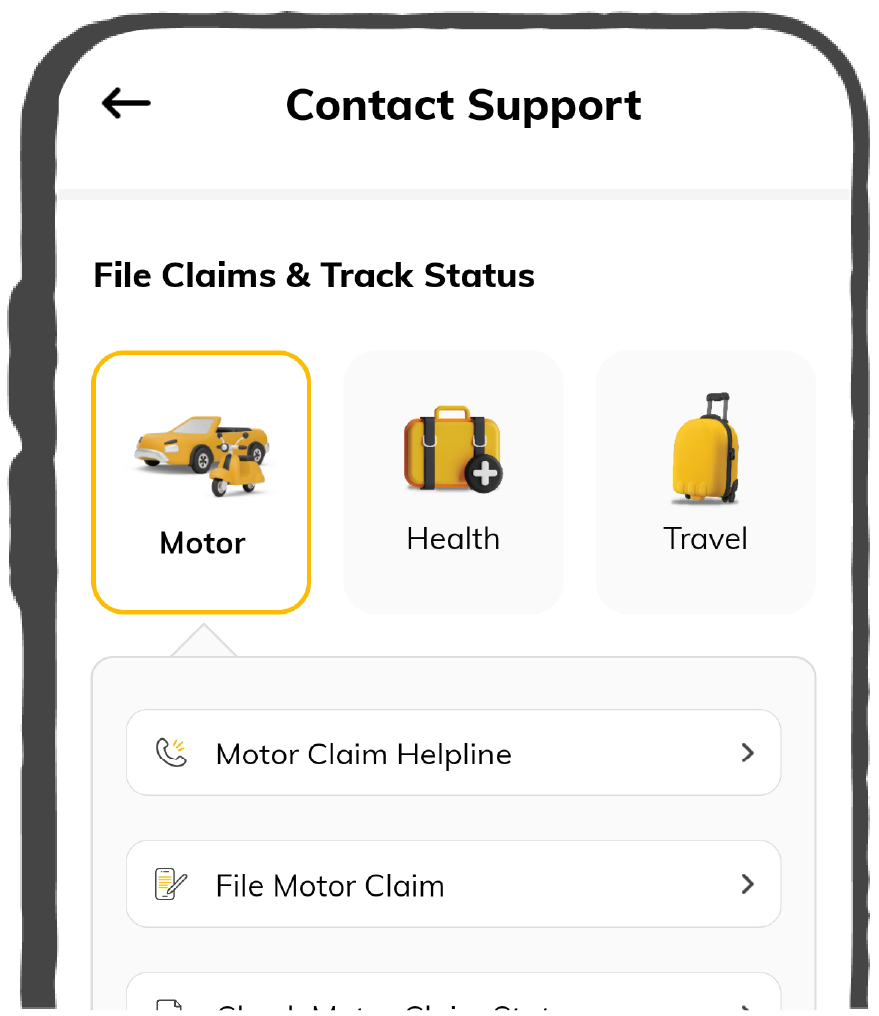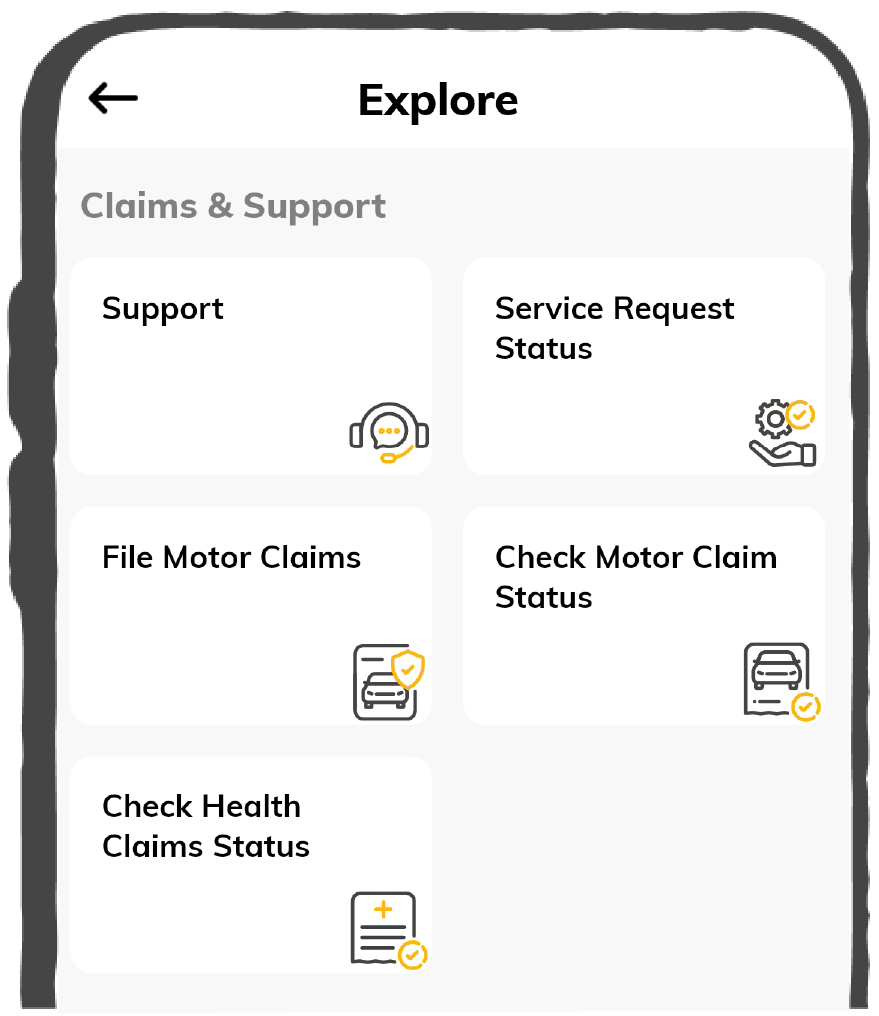
9000+ Cashless Garages
96% Claims Settled (FY 23-24)
15 Things You Should Never Do to Your Automatic/Manual Car

For some people, an automobile can be much more than a mere vehicle. It could be just as significant as a family member. Therefore, taking good care of the car and insure it with an appropriate car insurance plan is crucial.
However, several things people unknowingly do to their vehicles impact their longevity and overall performance. This guide identifies 15 things you should never do to your automatic or manual vehicle.
Read on!

Table of Contents

Things You Should Never Do to Your Automatic and Manual Car
Do not do any of the following if you want to maintain the best possible condition for your manual and automatic cars.
1. Ignoring Rust
It is generally worse than it appears. To prevent additional damage, remove surface rust and bubbling paint immediately.
2. Overfilling Tyres
Although over-inflation lowers rolling resistance, resulting in longer stopping distances, unpleasant rides, and early deterioration. For the best results, observe the manufacturer's instructions when inflating tyres.
3. Using the Wrong Coolant
Using the incorrect coolant or mixing it might harm the radiator, engine, and seals. Always use the prescribed coolant.
4. Mixing Brake Fluid with Power Steering Fluid
This might result in total braking or steering failure and expensive repairs.
5. Using ‘Universal’ Fluids
A ‘universal’ fluid can lead to system problems. Transmission and power steering fluids must adhere to the manufacturer’s requirements.
6. Disconnecting the Battery to Test the Alternator
Voltage spikes from this antiquated test can harm modern automotive electronics. For the best results, use a voltmeter instead.
7. Driving with the Oil Light On
Stop right away and check the oil level if the oil light appears. Engine damage can result from driving with little or no oil.
8. Driving with Less Than a Quarter Tank of Fuel
Fuel pump overheating and early failure might result from driving with low fuel levels.
9. Using the Wrong Oil
For optimal performance, modern engines need a certain type of oil. Engine damage and faults may result from using the incorrect type.
10. Using Dishwashing Detergent to Wash Your Car
It depletes wax and protecting oils, which causes paint to deteriorate. Instead, use the appropriate car wash soap.
11. Neglecting the Dipstick
Premature wear and sludge accumulation in the engine can be avoided by routinely monitoring and topping off the oil.
12. Leaving Beverages in the Car in Cold Weather
When frozen liquids expand, containers may rupture or cause untidy spillage.
13. Smoking While Refuelling the Car
Smoking next to petrol pumps poses a serious fire risk and should be avoided.
14. Driving Without Shoes
Driving barefoot might slow reaction time in an emergency and lower braking force.
15. Using the Wrong Transmission or Power Steering Fluid
Inappropriate fluid use can result in serious harm. Always utilise products that the manufacturer recommends.
What is the Importance of Proper Car Maintenance?
Proper maintenance improves vehicle safety, dependability, fuel economy, and resale value. Regular inspections and maintenance also extend your car's lifespan and functionality.
Thus, it is highly recommended that you comply with the owner's instructions and perform routine preventative maintenance, such as:
Battery & Electrical System Check
To avoid malfunctions, check the battery, charging, and starting systems.
Engine & Powertrain Inspection
Look for any problems with the engine's mechanical parts and onboard diagnostics.
Fuel, Ignition & Emissions Test
For efficiency, ensure the emissions, ignition, and fuel system are all operating correctly.
Oil Change
Depending on the kind and condition of the vehicle, change the oil and filter every 5,000 to 12,000 km.
Brakes Inspection
Check the brakes every 10,000–12,000 km or if you hear odd noises or have problems with the steering.
Coolant System Check
To stop corrosion, flush the system every two years and check the monthly coolant levels.
Battery Maintenance
Replace the batteries every 3 to 5 years, clean any rust, and make sure they are well anchored.
Most Common Mistakes to Avoid with Automatic Cars
An automatic transmission vehicle is an automobile without a clutch pedal that automatically shifts gears based on speed. Following are a few mistakes to avoid if you have a car with an automatic transmission system:
Using Both Feet While Driving an Automatic Car
If you manage to engage both pedals simultaneously while driving an automated car, it could result in a collision. Additionally, it may put undue strain on the vehicle's torque converter, transmission fluid, and braking fluid.
Putting Your Car in ‘Park’ Before it Has Fully Stopped
It is possible that certain new automobiles will not even let the driver put the car in park before it stops. However, you may also quickly shift to ‘Park’. Doing so can harm your car's transmission and lead to costly repairs.
The purpose of the parking gear is to keep the vehicle still when it is parked, not to replace the brakes.
Putting an Automatic Car in Neutral and Driving it Downhill
Shifting into neutral stops the fuel supply to the engine. This impairs your ability to control the vehicle because you cannot slow down using the engine's gears. In this case, you can only count on the primary breaks, which leads to added strain on them.
This can also lead to losing control over the vehicle, which might be hazardous, particularly when you are down a slope and must react fast.
Keeping Your Hands On the Gear Stick
You run the risk of early wear and tear and compromised safety if you habitually keep one hand on the gear stick. Your hand presses against the shifter rail when doing so, causing the synchronisers to be pushed, resulting in friction.
Due to this, the gear teeth may sustain premature damage.
Not Using the Parking Brake
Your car's parking brake keeps it stable when parked in a spot. Now, when the parking brake is not in use, the vehicle’s transmission remains unlocked, increasing its chances of rolling away.
Not Warming the Engine Before Driving
Particularly in colder climates, it is recommended that an automobile be warmed for at least 30 seconds before driving. This is because the fuel needs to be in a proper liquid form to function at its best.
Driving on Low Fuel Frequently
Over time, foreign particles or contaminants may accumulate at the bottom of your car's gasoline tank. These impurities can get into the engine while driving on low fuel, which is bad for your vehicle in the long term.
Most Common Mistakes to Avoid with Manual Cars
Cars featuring a clutch pedal, a gear stick with switching choices, and a manual gearbox are called manual-transmission vehicles. Here are the mistakes to avoid in a car with a manual transmission system:
Using the Clutch Continuously When Driving
The clutch gets worn out sooner, and there will be more friction when you keep it pushed halfway while driving. It will not just make your car less durable but will also increase its maintenance costs.
Not Engaging the Clutch When Shifting Gears
A clutch's primary job is to regulate contact between the car’s engine and transmission system. Thus, if you do not engage the clutch when shifting gears, the vehicle may experience a sequence of jerky movements. This happens as it tries to strike the ideal ratio between engine speed and gearing.
Putting Your Manual Car in Gear While Stationary
When a car is kept in gear while stationary, it indicates that the clutch is engaged. This can lead to accelerated wear on the clutch, increasing your vehicle’s maintenance costs.
Using Incorrect Gears at Incorrect Speeds
Using improper gears at the wrong speeds stresses the car. You will hear an unusual sound, and the vehicle will lag. This noise comes from the strain on the car's engine and transmission.
Engaging the Clutch Before Pressing the Brake
Although most drivers prefer to apply the brake without using the clutch, experts do not recommend this, especially for those who have just learned to drive. You need more knowledge and control to handle the car in such a circumstance.
Accelerating for an Extended Period Before Changing to the Next Gear
If you accelerate in a lower gear, your car will accelerate faster, but the speed will not increase much. Driving this way may strain the gearbox and make it deteriorate more quickly. At the same time, your car will consume more petrol than necessary.
Shifting to Neutral When Driving
People speculate that putting the vehicle in neutral while driving will save fuel. However, doing so is risky. If you put the car in neutral, you will have less control over it. In a dangerous situation, this could be fatal.
Shifting Immediately from First Gear to Second
Experts advise drivers not to shift into second gear until the vehicle reaches a speed between 8 and 24 km/h. This does not mean that you should press the accelerator as soon as you start the car. Engaging the second gear right away will shorten the gearbox's anticipated lifespan.
General Mistakes Drivers Should Avoid with Automatic/Manual Car
Everyone's safety on the roads can be increased by adhering to these safe driving practices:
Lane Cutting
It can be risky to change lanes without checking or signalling. Always wait for an opening and signal.
Ignoring Blind Spots
To prevent accidents, manually check over your shoulder before changing lanes.
Not Wearing Seat Belts
Both drivers and passengers should always wear seat belts since they greatly lower the risk of injury.
Ineffective Use of Turn Signals
Using them improperly or not at all confuses other drivers and raises the chance of an accident.
Skipping Car Maintenance
Regular maintenance keeps the car in good shape and guards against unplanned repairs.
Ignoring Tyre Pressure
Low tyre pressure lowers fuel economy and raises the possibility of punctures.
Not Understanding Traffic Signs
To maintain road safety, drivers should be aware of and abide by traffic signs at all times.
Drinking and Driving
One of the main reasons for traffic accidents and fatalities is drunk driving.
Using Phones While Driving
Avoid using a phone while driving, as it is just as risky as driving while intoxicated.
Ignoring Pedestrians & Emergency Vehicles
Drivers ought to yield to emergency vehicles and show consideration for pedestrians.
Tips to Keep Your Automatic and Manual Cars Healthy
You can lower maintenance expenses and increase the lifespan of your vehicle by following these easy yet effective tips:
Refer to the Owner's Manual
It includes crucial information regarding your vehicle, such as maintenance schedules and troubleshooting techniques.
Check Tyre Pressure
In addition to preventing wear, maintaining appropriate tyre pressure increases safety and fuel economy.
Change Oil and Oil Filter
By lowering contaminants and friction, routine oil changes guarantee smooth engine operation.
Keep the Engine Clean
Engine cleaning ensures improved performance by preventing dust accumulation and assisting in the detection of leaks.
Inspect Spark Plugs
Poor mileage, inconsistent acceleration, and trouble starting can all be caused by faulty spark plugs.
Clean the Interior
A dust-free and odour-free automobile interior can be maintained with regular vacuuming and innovative cleaning supplies.
Maintain the Battery
Battery life is increased, and power issues are avoided by cleaning the terminals and inspecting the connections.
Check Brake Fluid
Make sure there is enough brake fluid in the system and replace it if it seems polluted or black.
Optimise Fuel Economy
To increase mileage, keep your speed constant, steer clear of heavy loads, and drive effectively.
Replace the Cabin Air Filter
Air purity and AC efficiency are improved by changing the filter every 6 months.
Whether your car is manual or automatic, maintaining it properly is crucial to its durability, performance, and safety. Avoiding poor driving practices, skipping maintenance, and employing incorrect methods can prevent needless wear and expensive repairs. If you take good care of your car, it will last you many years.









